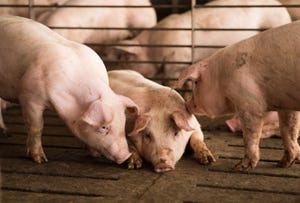Corn Report Baffles Analysts, Likely to Push Prices higher
Market analysts aren’t quite sure why corn stocks dropped so significantly in USDA’s quarterly grain stocks report, released along with the agency’s Acreage Report on June 30
July 1, 2010

Market analysts aren’t quite sure why corn stocks dropped so significantly in USDA’s quarterly grain stocks report, released along with the agency’s Acreage Report on June 30. (http://usda.mannlib.cornell.edu/usda/current/GraiStoc/GraiStoc-06-30-2010.txt.) But it’s apt to have a positive impact on corn prices.
Speaking at a CME Group press briefing, commodity analyst Greg Wagner says the numbers on acreage (http://usda.mannlib.cornell.edu/usda/current/Acre/Acre-06-30-2010.txt) and stocks “are very friendly for corn and soybeans. It’s anecdotal, but there is very widespread knowledge that we have very poor feed conversion from last year’s corn crop, and I think that’s where some of the larger consumption in corn is coming from. Certainly, ethanol use and exports are coming into play as well.”
“Because of the heavy short position in corn, new crop corn should migrate up into the $3.80 to $3.90 level over time,” Wagner said. “The trade has been given a very fundamentally supportive report. The market’s job is to follow through.”
Also watch for the impact of late-season weather on corn, Wagner said. “The crop is not made. USDA has already dialed in a U.S. yield estimate for corn that’s 2.7 bushels above trend yields. But what occurred last year won’t necessarily occur this year.”
Wagner says China is having a problem with its corn growing areas, which could translate into higher U.S. exports. “China has become a corn importer. It’s quite apparent they have a need for corn.”
Jim Bower, Bower Trading Co., added, “The world has changed a great deal. Over the last 10 years, we’ve increased the consumption of corn globally by 200 million metric tons. As long as everything goes smoothly with the corn crop, nothing will be too volatile. But we’re just one step away from a major problem if something happens in the world crop.”
The same situation exists in soybeans, according to Bower. “China alone consumes an additional 6 million metric tons of soybeans, so there’s very little room for error there, particularly if Brazil or Argentina, which tend to make up for that difference, have problems.”
Even though soybean acreage came in a little above the trade estimates, quarterly soybeans stocks came in lower than expected, noted Bower. “So there’s still a bit of a question mark on where we’re going with the old crop soybean situation.”
Bower says Midwest producers were still planting or replanting soybeans on about 2.5 million acres.
Bower says the seasonal lows for corn and soybeans “are probably in.”
Despite USDA’s estimate for an increase in average yield for corn in 2010, there is still quite a bit of uncertainty for the corn crop, Bower said. “Heavy precipitation in June does not guarantee a good harvest. The crop can become shallow rooted, and if you get any kind of dryness in July-September, the crop can suffer.
“The corn crop really looks good right now. But we have to really be careful about telling people you have a record corn yield on June 30.”
-- Elton Robinson, Farm Press
You May Also Like



